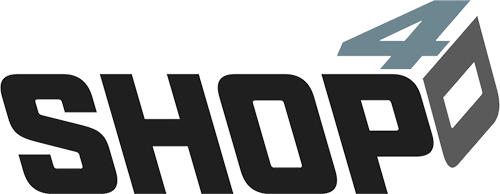by David Rogers
Record growth throughout the automotive industry in 2021 created an unexpected need and an interesting opportunity for many repair organizations: they hit their bay and technician production capacity, and the only way to keep growing is to add another location.
No matter how many locations your operation spans now, trying to scale up in 2022 is a challenge. Opening a new sustainable, successful location not only requires an additional facility, but finding and hiring additional staff (in a time when employees have never been harder to find), growing the customer base without cannibalizing your current market, and most critically, implementing the policies and procedures that your new location needs to run smoothly even when you’re not there on site.
There’s no sugarcoating the fact that scaling a business is a difficult challenge. But if executed correctly, it also has the potential to grow your brand, extend your reach in your community, and make it far easier to reach and exceed your financial goals.
Once you commit to scaling, you’re going to find it takes more self-discipline as your calendar and routing are going to change dramatically. Much of your time is going to be spent scouting locations, securing funding for new equipment, hiring, moving. Balancing out which staff to put where. Layouts, building design, construction. The list is endless.
Which is why the period before you undertake managing and orchestrating all of those tasks is the most critical.
Here’s why: not for a long time will you have the bandwidth to look at your systems and processes and figure out where you have production bottlenecks and excess overhead. If you have an organization in which exists a mishmash of systems and processes that are creating stacks and piles of inefficiencies before you scale, then what happens when your new location uses that same blueprint?
The modern repair shop is an incredible place. Owners have never had greater access to technology that promised to do so much to make it easier to run a shop. Repair shop employees have tools to manage their workflows, schedules, production, inspections, estimates, and customer communication. Shops can strap together hardware and software that make running a repair shop look and feel like piloting a rocketship.
But the problem with addressing problems one at a time, and with strapping each of these disparate systems and processes and hardware solutions together is that it invariably leads to a top-heavy disaster waiting to happen. You can picture what happens when rockets get top heavy – when a shop crashes it’s not quite as pretty an explosion, but every bit the disaster.
That’s because all of those individual systems and processes and computers and monitors and tools all require specialized staff to make them work. And even if you’re just hiring extra admins to generate the spreadsheets or push the buttons, each of those new staff members is another addition to the payroll and benefits and another personality to integrate into the company culture. If you have to hire just to keep treading water, you’re falling behind.
And what’s more, each of those subscriptions is further submitting your future into the hands of companies whose only goal is to drink the water from your glass. Pretty soon, you’re going to be thirsty even as everyone around you is happy and satisfied.
Imagine taking this top-heavy, confusing, over-laborious mess and multiplying that across multiple locations. Rather than this new location creating additional sales and a greater economy of scale, it has instead added additional payroll, made it necessary to manage even more personalities, processes, and policies, and introduced unnecessary stress and chaos into your organization.
What’s the best way to eliminate this top-heavy burden so your organization can scale effectively?
A good rule of thumb is that if you have a product or program in your shop for over a year and it doesn’t make you more efficient or productive, it’s time to find a better solution. Which means that if you have to hire additional staff or purchase additional hardware just to get your new purchase up and running, you’re heading in the wrong direction.
Does that mean that technology has no place in making a shop more efficient? Far from it! The problem is technology for technology’s sake. Trying to solve each problem in the organization by adding a new product, program, employee, and layer of complexity makes each shop and employee less efficient, less productive, and makes it that much harder to scale effectively.
A program may look pretty and promise incredible features, but no matter how good it looks or sounds, if the end result isn’t clean, crisp, clear numbers and efficiencies throughout the shop, then it’s holding your organization back.
After you’ve cleaned house of the dead weight and excess overhead and made it so that the organization won’t tip over when you scale, the next key is to establish a clear rule when adding infrastructure: start with the process.
Before signing that contract and purchasing that next tool or hiring that next employee, make sure that the process you’re seeking to improve is first perfected. If everyone is clear on their expectations, every phase is clearly documented and trained, and every unnecessary step is eliminated, and the need still exists, then perhaps it’s a necessary expense. In any other situation, it’s nothing more than an additional hurdle to you finding the growth and success you deserve.
The upside is tremendous. Not only will starting with the process ensure that your new locations aren’t burdened with top-heavy infrastructure and struggling to keep up with expenses…it also means that each of your locations can maximize efficiency and produce more hours and sales with less personnel.

